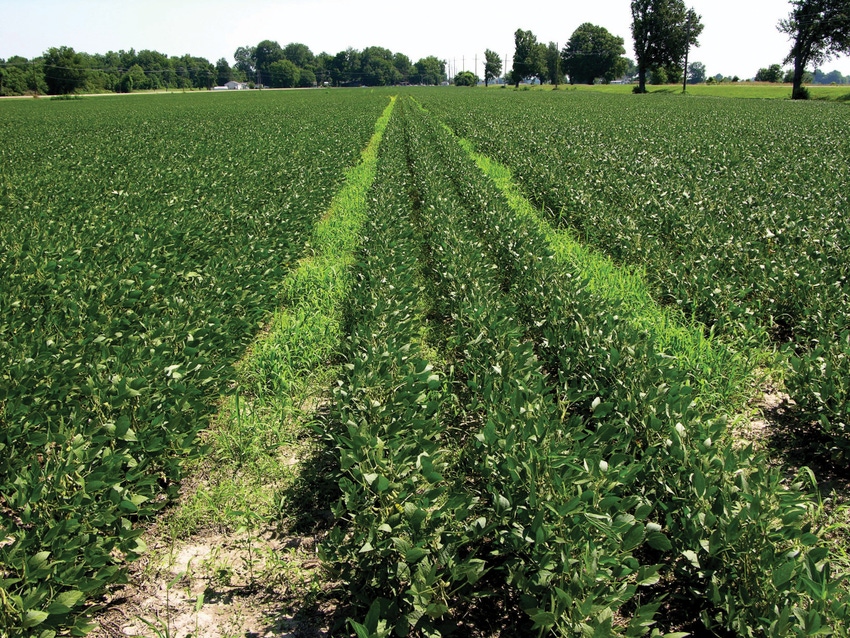May 7, 2012

Rice acreage will be down in 2012. Excessive summer heat in 2010 and 2011, low rice prices, high prices for other grain crops and other factors have all affected Mississippi’s rice acreage. From a weed control perspective, a positive aspect of reduced rice acres is the opportunity to ease some of the pressure placed on rice herbicides over the last few years, primarily Newpath in Clearfield rice.
Since the Clearfield technology was commercialized, the percentage of acres planted to Clearfield varieties has increased each year. Clearfield varieties represented approximately 65 percent of Mississippi rice in 2011. One of the stewardship guidelines for Clearfield rice states, “Do not plant Clearfield rice in consecutive years in the same field.” Simple math suggests this is improbable when the majority of acres contain Clearfield varieties.
Barnyardgrass resistant to Newpath was confirmed in Sunflower County, Miss., in 2010. Two additional Newpath-resistant populations were identified in Bolivar and Washington counties in 2011. The problem would likely have been more widespread last year, but Mississippi rice acres decreased by 48 percent from 2010 to 2011 and are forecasted to decline by another significant percentage in 2012.
Fewer rice acres means less Clearfield rice, which reduces the amount of Newpath applied and the probability that more Newpath-resistant barnyardgrass populations are identified. Some fields previously planted to rice will be in corn, but most will likely be soybeans in 2012.
Most barnyardgrass control programs in corn, cotton, and soybean production are based on glyphosate. Every year there are numerous complaints about poor barnyardgrass control with glyphosate. So far, we have been able to explain most of these. Among the causes of poor glyphosate performance on barnyardgrass are improper application timing, poor spray water quality (pH or hard water), new emergence following application or dry conditions.
Several barnyardgrass populations have been screened for potential glyphosate resistance at the Mississippi State University Delta Research and Extension Center since 2008. All of these populations have been controlled with glyphosate in the greenhouse. However, it is common to hear that a higher glyphosate rate is required to control barnyardgrass than in years past.
In the Roundup Ready age, a rice-soybean rotation has been a good tool for managing barnyardgrass. With some exceptions, glyphosate has reliably controlled barnyardgrass in most situations, so the herbicide modes of action used for barnyardgrass control in rice have only occasionally been utilized in soybeans. Furthermore, where glyphosate-resistant Palmer amaranth is a problem, products containing S-metolachlor (Dual Magnum, Boundary, Prefix, Sequence) are used extensively. S-metolachlor provides good to excellent residual control of barnyardgrass, so barnyardgrass is often controlled as a result of efforts to control glyphosate-resistant Palmer amaranth. Rotating crops and herbicide modes of action as well as utilizing residual herbicides are all excellent resistance management techniques.
When crop rotation is used as a tool to manage a particular weed species, care should be taken to completely control that weed in the rotational crop. For instance, there are more options for control of glyphosate-resistant Palmer amaranth in corn compared with cotton. However, if glyphosate-resistant Palmer amaranth is not controlled in the corn year of a cotton-corn rotation or if it is allowed to grow and produce seed after corn harvest, then the positive benefits of using corn to reduce the Palmer amaranth population are negated.
The same concept holds true for barnyardgrass control in a rice-soybean rotation. If barnyardgrass is left uncontrolled in the soybean crop, grows up in wheel tracks as in the photograph, or is not managed after harvest, it will have to be dealt with during the following year’s rice crop.
With no new herbicide modes of action under development and increasing problems with resistance to current herbicide modes of action, next year’s crop must be considered when controlling weeds this year. Barnyardgrass is the most troublesome weed in rice just like glyphosate-resistant Palmer amaranth is the most troublesome weed in cotton or soybeans. Barnyardgrass that is allowed to survive and produce seed in the soybean rotation year can cripple a rice weed control program the following year.
So, weed control in next year’s rice crop starts with a good plan for managing this year’s soybean crop. Fewer barnyardgrass escapes means less seed production, which in turn could impact herbicide applications in next year’s rice crop.
You May Also Like




